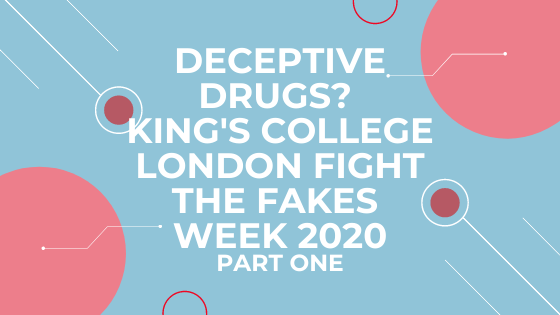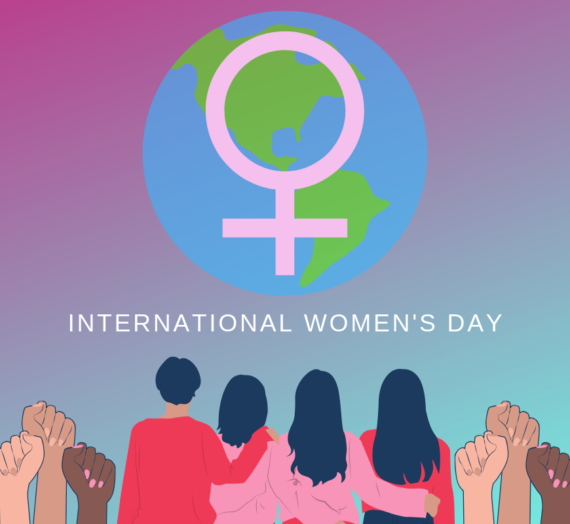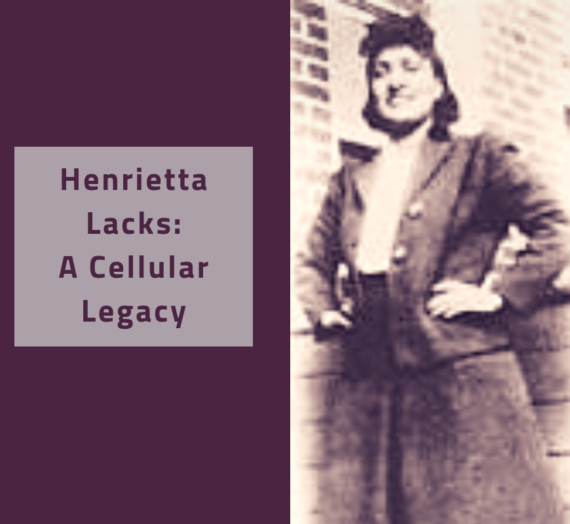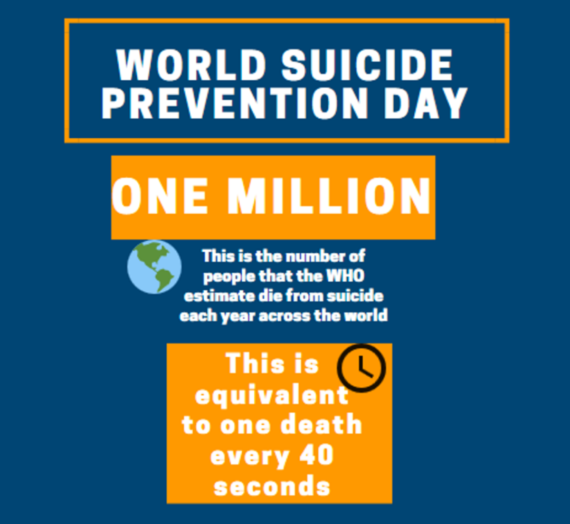Did you know that every day, approximately 20 new illegal online pharmacies are set up around the world? This is just one of the eye-opening statistics we learnt from attending King’s College London’s Fight the Fakes Week 2020. The Fight the Fakes Alliance is an international organisation aiming to raise awareness of the risks of fake medicines. King’s College London’s Fight the Fakes campaign was founded by Dr. Bahijja Raimi-Abraham (Lecturer in Pharmaceutics at King’s College London) in March 2020. We’re delighted to partner with King’s Fight the Fakes to bring you an event summary for the week so that you can learn about the dangers of fake medicines, and how to avoid them too.
Introduction and welcome event

How do we define what constitutes fake medicine? For almost two decades, this has been hotly debated. Elizabeth Pisani began by introducing the ‘Guidelines for the development of measures to combat counterfeit drugs’, released by the WHO in 199, which led to confusion among its member states over what could be considered ‘counterfeit’. For example, major pharmaceutical companies have sometimes called for generic drugs (copies of a drug that are much cheaper to manufacture), to be considered fakes, whereas charitable organisations consider such drugs to be beneficial in increasing access to medicine.
According to the WHO, ‘fake’ medicines can be placed into three categories, substandard, unregistered/unlicensed, and falsified (shown below). Of these three, substandard medications, manufactured by illegitimate companies, pose the most danger as these may contain too little or too much of the active ingredient. This could mean the medication doesn’t do what it says it will, or even worse, could produce adverse effects.

There are many reasons for the existence of fake medicines, but there are three major factors: corruption or poor governance, weak technical capacity by regulators and manufacturers, and constrained access.
The issue of fake medicines could not be more relevant than right now. The development of vaccines against COVID-19, with high demand and limited supply, has created a market for fake vaccines. This is extremely dangerous as these fakes are likely inactive but provide a false sense of security. This may cause people ignore COVID-19 regulations leading to increased transmittance, more deaths, and a higher risk of the emergence of deadlier variants. It is clear that the problem of falsified drugs is a major issue in global health, and is something that we need to take seriously.
Dangers of fake medicines online

Professor Tim Mackey gave the first talk of the session, highlighting the connection between the rise of antimicrobial resistance and the increased prevalence of fake medicines. To investigate this link, Prof. Mackey and his research team went online to acquire some samples of these fake drugs, finding that the packages arrived damaged and with false labelling. They also received correspondence from the sellers warning buyers not to tell anyone about their purchase. Sounds dodgy, right?
Laboratory tests confirmed the team’s suspicions, with mass spectrophotometry revealing that all of the purchased drugs contained some compounds other than the indicated drug, as well as several unlisted active pharmaceutical ingredients (APIs).

Prof. Mackey also discussed the importance of machine learning in fighting fake medicine. He and his team were able to use such methods to detect sellers online, identify clusters of servers connected to these sellers, and ultimately, locate them. Social media is also aiding the rise of fake drugs online, with sellers operating on Instagram and YouTube to advertise their products, meaning that fake drugs can be accessed even by people not setting out to find them. Prof. Mackey pointed out that the world of illegal pharmacies is an interconnected ecosystem, with sellers and buyers connected through the surface web, social media, and even the dark web. Because of this interconnectivity, Prof. Mackey and his team have developed web surveillance dashboards for the police to use as monitoring tools in the fight against fake and dangerous medicines.
Next up was Libby Baney, who began by discussing some of the reasons why people turn to online pharmacies for their medicines. Lowered costs, convenience, and better access to care are listed as the top three reasons that people seek out online pharmacies. Libby revealed that there are 35-45,000 online pharmacies in operation at any given moment and that 95% of these are illegal.
Because of the relative ease of starting a website nowadays, more and more are popping up every day. Worryingly, most pharmacists are not educated about the potential dangers of these online pharmacies, meaning they are equipped to warn their patients.
Thankfully though, awareness of the issue is rising, partly due to organisations such as Fight the Fakes. There are also things that we as consumers can do to make sure the online pharmacies we are using are safe; checking for security signs on websites and making sure the URL is accurate. Furthermore, BuysafeRX is a resource that provides guides on buying medicine safely online.
Lastly, Mike Isles emphasised that, while the internet is aiding the expanse of illegal online pharmacies, it could also be part of the solution. Agorateka is a website currently in use for identifying illegal online activity, and Mike proposed that a version could be created specifically for identifying illegal online pharmacies. Liaising with major internet corporations such as Google to demote the profiles of websites selling medicines illegally, will also play a key role in tackling the problem. Mike also suggested that in the future, we could see a national, verified domain name given to all legal online pharmacies, to help identify those not complying with the rules.
How to identify fake medicines

Wednesday’s session began with Warda Duale Mahamed talking about the identification of fake excipients. The seizure of illegal medicines increased by 18% in 2019, and during the COVID-19 pandemic, Interpol and Europol have detected further increases in the sale of falsified medicines. There are four categories of illegal pharmaceutical activity that Novartis aim to tackle:

- Counterfeits: Fake medicines produced by criminal organisations
- Theft: Medicines sold on the black market
- Tampering: Drugs being altered to extend their expiry dates
- Illegal diversion: Legitimate pharmaceutical products intended for use in one market being illegally intercepted and diverted for sale in a different market
During the second part of the session, Theophile Sebgo outlined some of the forensic processes used in detecting false medicines and identifying illegal pharmacies. Advances in technology mean that mobile toolkits can be transported around the world to test drugs suspected of being falsified. These ‘mobile laboratories’ can be used for tests such as vibrational spectroscopy, which can quickly identify the components of fake drugs, with cloud-based software being used to analyse outputs and authenticate results. Theophile also highlighted the impacts of false medicines on patient safety, taking us through examples of false cancer treatments containing incorrect APIs, as well as fake antimalarials four years out of date, both putting the users of these drugs at extreme risk of adverse events.
That’s the end of part one of our highlights from King’s Fight the Fakes Week 2020! Be sure to share this post to raise awareness of the dangers of fake medicines, and keep an eye out for the second and final instalment in our review!





Deceptive Drugs: King’s College London’s Fight the Fakes Week 2020 (Part Two) - Seeking Science
[…] back to our overview of King’s College London’s Fight the Fakes Week 2020! In part one, we introduced The Fight the Fakes Alliance and gave you the lowdown on the first three talks of […]